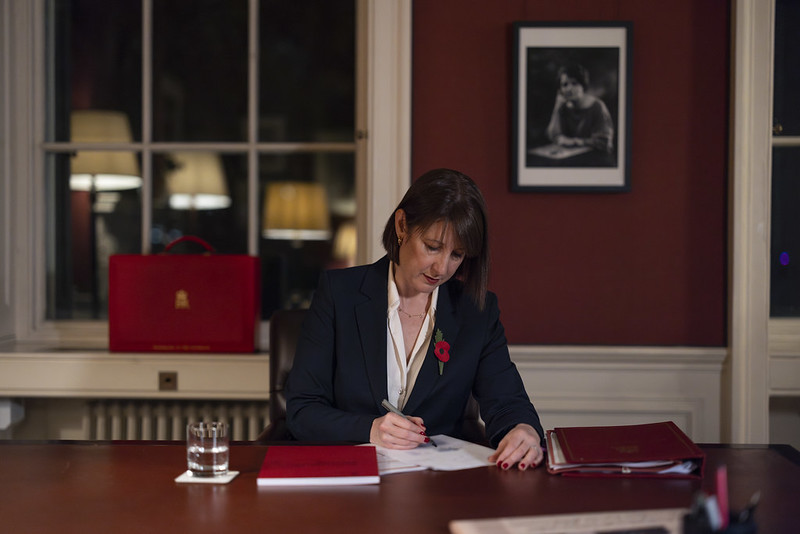
The world has changed since the Chancellor presented her first Budget six months ago – but the property industry will look to see how much this has tested her resolve to kickstart the housing market when Rachel Reeves delivers the Spring Statement on Wednesday.
Building 1.5 million homes over the next five years is a key plank of the government’s growth targets over the next five years.
But the economy looks very different to the one in which Reeves presented her 30 October Budget, which lifted spending by around £70bn a year.
Tax rises, amounting to £36bn account for just over half of this, with £32bn coming from borrowing.
This left the Chancellor with just £9.9bn of surplus, or headroom, in the Treasury’s day-to-day spending budget, which govern her fiscal rules that constrain the administration’s management of the public finances.
This is a tight surplus “considering the government spends over £1trn a year,” the Spring Statement 2025: Background briefing by the House of Commons Library points out.
What’s changed
Two things.
The election of US President Donald Trump in November has seen the imposition of up to 25% tariffs on steel and aluminium entering America.
Trump has threatened to impose more tariffs on other countries to achieve various economic and political goals.
Reeves has said that even if the US does not directly apply tariffs to the UK, the British economy would be affected by slower global growth and international trade.
The UK, and other European nations, are also increasing defence spending following President Trump’s softening towards Russia and criticism of NATO.
To do this, the UK government will cut the foreign aid budget to 0.3% of UK gross income from 0.5%, reduce the welfare budget by £5bn and is targeting cuts to the civil service of around £2bn, or 15% a year.
The second thing that has happened since the October Budget is that the UK economy slowed in the second half of last year.
Quarterly growth was unchanged in the third quarter and up by 0.1% in the final three months of 2024. This followed growth of 0.8% and 0.4% in the first two quarters of 2024, respectively.
In the first two months of the year, the economy shrank by 0.1% in January and grew by 0.1% in February, although monthly measures are more volatile than quarterly readings.
New 2025 forecasts
The new economic environment leaves the October forecasts of public finances watchdog, the Office for Budget Responsibility, looking optimistic and out of step with other economists.
Back in October, the OBR forecast UK growth of 2% this year and 1.8% in 2026.
But last month, the Bank of England predicted UK growth at 0.75% this year and 1.5% in 2026.
The OBR is likely to lower its growth forecast for 2025 this week.
All this means that when the Chancellor presents the Spring Statement, having already seen the new OBR guidance, she is likely to set out further, reductions, tax changes and new measures in a bid to boost UK growth.
Housebuilding
The government announced £600m worth to train 60,000 more bricklayers electricians and carpenters over the next four years at the weekend to meet its housebuilding target.
This comes after plans in the Planning and Infrastructure Bill, introduced earlier this month, to streamline planning committees to fast-track building work.
Observers will watch to see if Reeves announces more measures to help housebuilders.
Mortgages
The Financial Conduct Authority earlier this month said it would open consultations on making it easier for remortgagers to switch to a new lender and on home loan stress testing.
UK Finance and Nationwide this month called for an easing of existing loan-to-income limits for new residential mortgages at, or above, 4.5 times income, which are currently set at 15% across major lenders.
The industry will watch to see if the Chancellor has anything more to say on home loans, or, offers anything on the direction of travel and speed of current reviews.
Stamp duty
On 1 April, the stamp duty rate threshold will revert to September 2022 levels, before the Liz Truss Budget, falling to £125,000 from £250,000 for home movers, and to £300,000 from £425,000 for first-time buyers.
The industry has been lobbying for lower FTB thresholds to remain in place, and an extension for all homebuyers rushing to complete deals before the deadline falls in two weeks.
Saffron for Intermediaries head of business development Tony Hall says: “We’re hearing from brokers that transactions started as early as January may not complete in time.
“We urge the government to extend the deadline to support the estimated 75,000 homebuyers at risk of missing out and facing higher tax bills.”
Lifetime ISA
The savings industry has long argued that the Lifetime ISA needs reform.
They say the scheme’s 25% early withdrawal charge effectively acts as a 6.25% exit penalty on a consumer’s own savings.
Critics add that the product’s dual lifetime savings element is confusing and little users by consumers. They say the package should be stripped back and solely used as a way for FTBs to save for a home deposit.
However, the Chancellor may wait for the Treasury Committee, which is currently investigating whether LISAs are fit for purpose and is expected to report later this year, before acting.
Energy performance certificates
The energy department launched a consultation in February, on how best to lift the 52% of private rented homes that fall below an energy performance certificate rating of C to that level, or above, by 2030.
It estimates average costs to landlords will range between £6,100 and £6,800 over the next five years.
Molo Finance chief commercial officer Mark Michaelides says buy-to-let owners will look for “any green initiatives to support energy performance certificate improvements”.
The Chancellor has stressed her desire to get away from presenting two Budgets a year, as has been the norm over the last decade.
But with a fragile economy to contend with and many calls on the public purse, her Spring Statement may feel like one in all but name.



